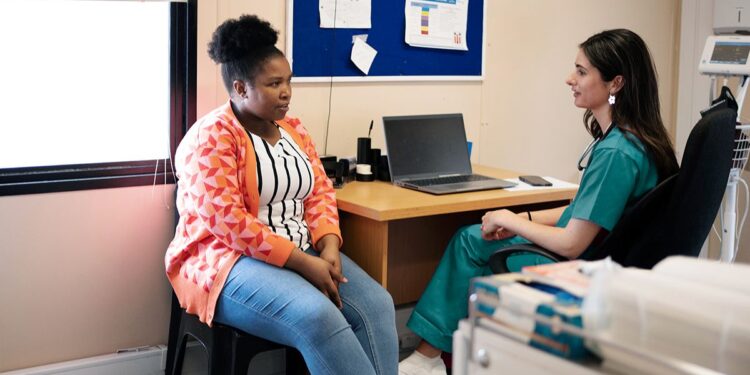
- Researchers estimate that around 44% of people in the U.S. with diabetes are unaware they have the disease.
- Experts say undiagnosed and under-treated diabetes can lead to a variety of serious health issues, including heart disease and neuropathy.
- They recommend that people get regular screenings for blood glucose levels to determine if they have diabetes.
Researchers report that a significant portion of the world’s population with diabetes is undiagnosed and many people who are aware of their condition are still not getting optimal treatment.
The study, from scientists at the Institute for Health Metrics and Evaluation (IHME) at the University of Washington School of Medicine in Seattle, was published on September 8 in
The findings indicate that 44% of people ages 15 and older worldwide are unaware they have developed diabetes.
The highest rate of undiagnosed cases was among young adults, who face
In addition, the IHME scientists said 91% of people diagnosed with diabetes were receiving some form of pharmacological treatment. However, they estimated that only 42% of those receiving treatment had their blood sugar levels managed optimally.
David Cutler, MD, a family medicine physician at Providence Saint John’s Health Center in Santa Monica, CA, not affiliated with the research, said the study sends a clear message.
“We need to make people aware of the prevalence and seriousness of this disease,” he told Healthline.
The study analyzed information on people of all ages and genders in 204 countries from 2000 to 2023.
The researchers reported that high-income North America had the highest rates of diagnosis, while the high-income Asia Pacific region showed the highest rates of treatment. Southern Latin America had the highest rates of optimal blood sugar management.
Central sub-Saharan Africa had the lowest rates of diagnosis, with less than 20% of people with diabetes being aware of their condition.
The research team told Healthline that both type 1 diabetes and type 2 diabetes were included in the analysis, but most of the undiagnosed cases involved type 2 diabetes.
The Centers for Disease Control and Prevention (CDC)
However, another 8 million adults are unaware they have the disease. That’s an undiagnosed rate of about 20%.
“Diagnosing diabetes early is important because it allows for timely management to prevent or delay long-term complications,” Rita Kalyani, MD, the chief scientific and medical officer at the American Diabetes Association (ADA), told Healthline. Kalyani wasn’t involved in the research.
The IMHE researchers stated in a news release that undiagnosed cases of diabetes “could easily become a silent epidemic.”
They note there is an urgent need for investments in screening programs, especially among younger populations. They add that better access to medications and glucose-monitoring tools is also essential.
Lauryn Stafford, a researcher at IMHE and the lead author of the study, told Healthline that diabetes that isn’t diagnosed or managed properly can lead to a variety of serious health issues, including:
“If someone is not aware of their diabetes, they will not receive the treatment or lifestyle guidance from their physician that they need to manage their diabetes,” Stafford said.
“The longer someone has diabetes that is not managed with treatment, the greater risk of developing microvascular complications,” she added.
“The health risks from diabetes can be quite detrimental,” noted Cutler.
Type 1 diabetes is an autoimmune condition in which a person’s body doesn’t produce sufficient insulin. It is usually a genetic condition. About 2 million U.S. adults have this type of diabetes.
Type 2 diabetes is a chronic condition in which the body has difficulty managing blood sugar levels. People with weight management issues have a higher risk of developing type 2 diabetes. About 36 million U.S. adults are estimated to have this type of diabetes.
The American Diabetes Association (ADA) states there are a variety of symptoms that can indicate a person may be developing diabetes. Among them:
- urinating often
- feeling very thirsty
- feeling very hungry — even though you are eating
- extreme fatigue
- blurry vision
- cuts/bruises that are slow to heal
- weight loss — even though you are eating more (type 1)
- tingling, pain, or numbness in the hands/feet (type 2)
However, she pointed out that diabetes symptoms may not appear in the initial stages of the disease.
“Diabetes may go undiagnosed for a while as it can sometimes take time for someone to develop symptoms or complications that are serious enough to warrant a visit to a healthcare provider. This is particularly the case for type 2 diabetes,” Stafford said.
Kalyani agreed. “In the early stages, most people with diabetes are asymptomatic, which highlights the importance of screening and diagnosis,” she noted.
Cutler added that in many cases, a person won’t develop symptoms until their condition has reached an advanced stage. “It’s a slow-progressing disease, and many times a person won’t have any signs or symptoms,” he said.
That’s why experts recommend regular screenings for diabetes. Cutler said that an A1c test, which measures a person’s average blood sugar level over the previous three months, is particularly important.
Stafford, however, cautioned that screenings are not necessarily convenient or available for everyone.
“The proper implementation of screening protocols requires regular visits with primary care providers, which may be difficult for people who are underinsured or live in rural/low-resource areas with limited healthcare facilities,” she said.
“For young adults, it may not be standard practice to regularly screen for diabetes, even if they have risk factors. Given the larger uninsured population in the United States compared to other high-income countries, it is likely that this factor plays a larger role in undiagnosed diabetes,” Stafford added.
Treatment for type 2 diabetes usually involves lifestyle changes. Regular exercise is recommended, mainly to manage a person’s weight.
A healthy diet is also a key component. Among the dietary recommendations:
- Eating foods such as fruits, vegetables, and whole grains that are rich in fiber and healthy carbohydrates.
- Eating at regular intervals.
- Keep sweets, animal fats, and refined carbohydrates to a minimum.
Some medications, such as metformin, can be prescribed for type 2 diabetes to lower glucose levels and improve the body’s response to insulin.
In addition, some weight-loss GLP-1 drugs, including Ozempic and Mounjaro, have been approved to treat type 2 diabetes.
Source link : https://www.healthline.com/health-news/nearly-half-americans-undiagnosed-diabetes
Author :
Publish date : 2025-09-09 11:24:23
Copyright for syndicated content belongs to the linked Source.





